Overlooking the vast Mesopotamian plain from just 4 kilometers east of Mardin, Deyrulzafaran Monastery stands as one of the oldest and most revered Syriac Christian sites in the world. Also known as the Saffron Monastery (from the Turkish “Safran”), this extraordinary spiritual complex is not only a religious pilgrimage site but also a powerful symbol of cultural resilience.
Originally constructed in the 5th century, the site has continuously functioned as a place of worship, learning, and healing for over 1,500 years.
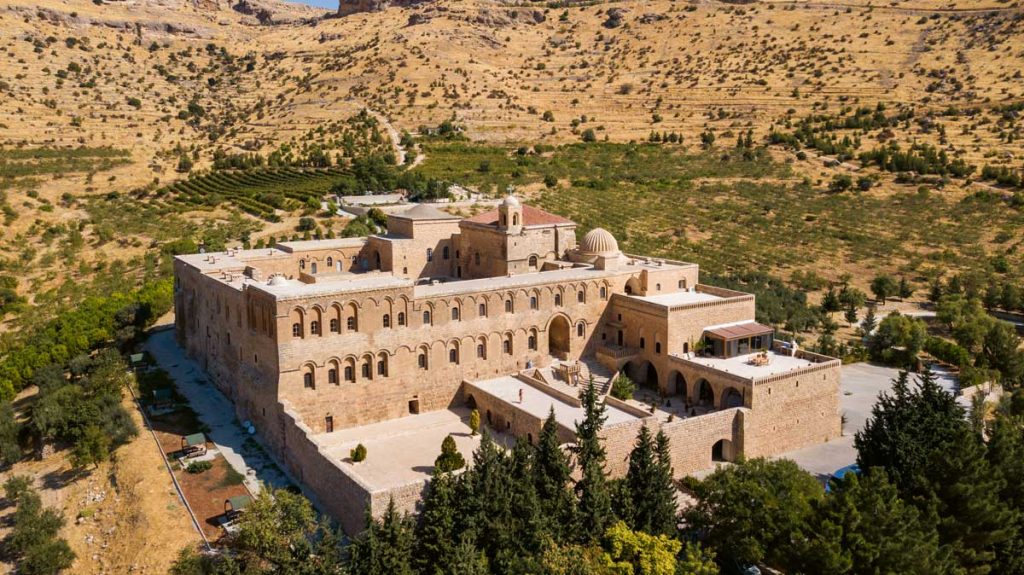
Deyrulzafaran Monastery (Atlas)
From Sun Temple to Monastic Stronghold
Long before it became a Christian monastery, the site was home to a sun temple in ancient times. During the Roman period, the sun temple was transformed into a fortress. Later, Saint Shleymun chose the location for constructing a monastery, incorporating sacred relics of saints from surrounding regions.
Although the original construction timeline remains unclear, the monastery was initially known as the Mor Shleymun Monastery. A major transformation occurred in 793 AD, when Metropolitan Mor Hananyo led a restoration, giving the monastery its enduring name; Mor Hananyo Monastery.
By the 15th century, the saffron plant growing abundantly in the area lent the monastery its modern name: Deyrulzafaran Monastery.

Mor Hanonyo Church inside the Deyrulzafaran Monastery is also known as the Domed Church (Atlas).
Architectural Mastery with Spiritual Depth
The monastery’s architecture is a testament to Mardin’s stonework tradition, blending spirituality and aesthetics in every carved detail. It comprises four main sections, each with deep historical and religious importance:
- Mor Hananyo Church (the domed church): The central place of worship, known for its serene acoustics and architectural harmony.
- House of Saints: A sacred space containing relics and historical artifacts.
- Church of the Virgin Mary: A beautiful and spiritually significant sanctuary.
- Ancient Sun Temple: Preserved within the monastery grounds, linking the site’s spiritual lineage from pre-Christian to Christian times.
The use of locally quarried stone and traditional Mardin craftsmanship make the complex an architectural gem that resonates with quiet reverence.
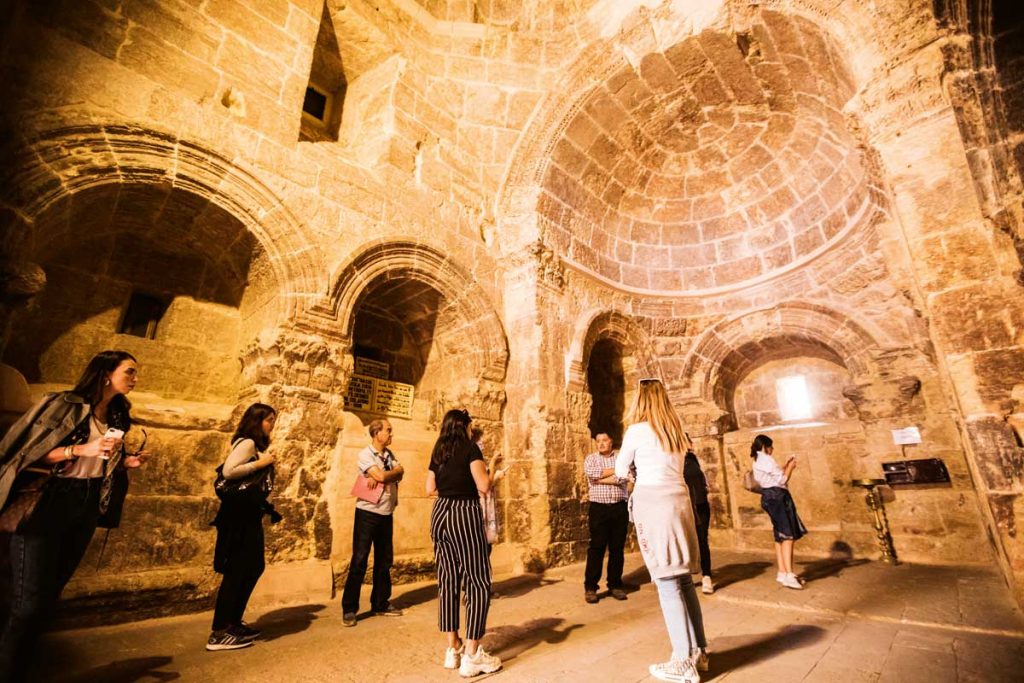
The interior of the House of Saints, where the clergy who served in the monastery are buried
A Hub of Religious Education and Printing Innovation
More than a monastery, Deyrulzafaran served as a center of religious learning and knowledge dissemination for centuries. Some historians even suggest that it was once home to one of the first medical academies in the world.
In 1876, a major milestone was reached when 4th Petrus, inspired by his visit to England, brought a printing press to the monastery. This innovation led to the publication of religious and educational texts in Syriac, Arabic, Turkish, and Ottoman Turkish.
One notable publication was the monthly magazine “
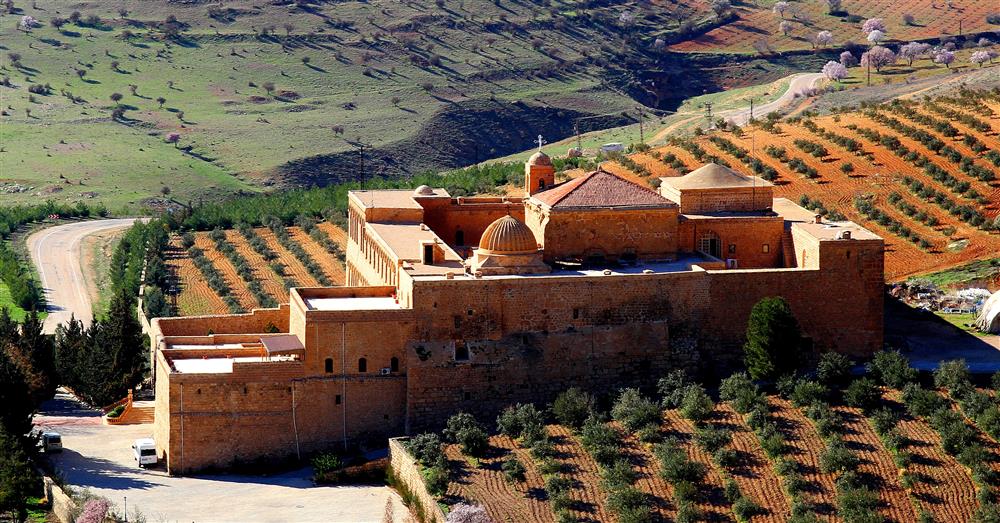
Deyrulzafaran Monastery
“, which was printed until 1953, turning the monastery into a cultural lighthouse for the Syriac Christian community.
Deyrulzafaran Today: Still Beating with Faith
The monastery remains an active center of the Syriac Orthodox Church, serving as the residence of the Metropolitan of Mardin. Each year, Syriac Christians from around the globe travel to Deyrulzafaran for prayer, connection, and reflection.
Some elements of the original printing press are still housed within the monastery today, while others are preserved in Mardin’s Forty Martyrs Church.
As a major destination for religious tourism, the Deyrulzafaran Monastery captivates visitors with its spiritual atmosphere, centuries-old history, and the enduring rhythm of faith that echoes through its stone corridors.
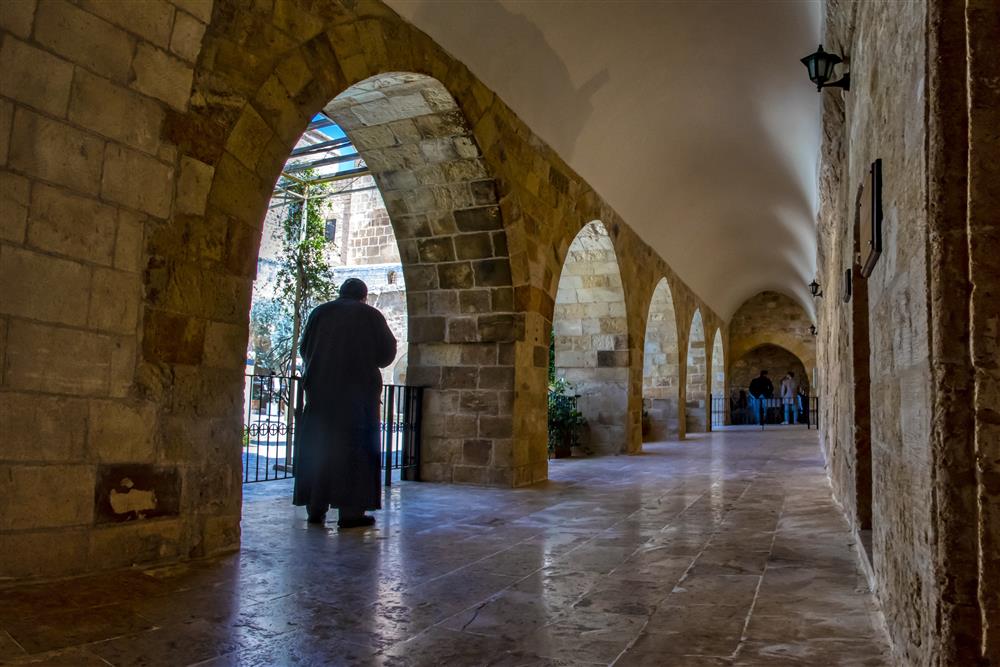
Internal courtyard
Why Visit Deyrulzafaran Monastery?
- Spiritual Significance: One of the holiest sites in Syriac Christianity
- Architectural Beauty: Ancient stonework, domed churches, and sacred relics
- Cultural History: A timeline that spans empires, religions, and civilizations
- Peaceful Setting: Panoramic views of the Mesopotamian plain
- Living Heritage: Still home to a religious community and open to visitors
Whether you’re a spiritual seeker, history lover, or curious traveler, Deyrulzafaran Monastery offers a profound journey into faith, heritage, and timeless beauty.
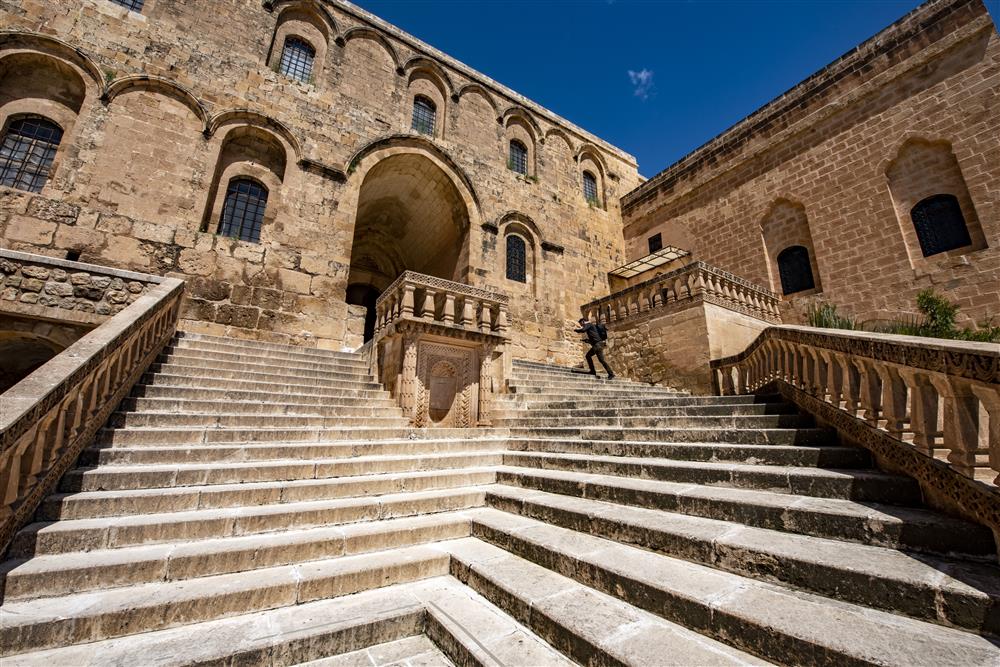
Towards the entrance
Bonus: Suggested Travel Itinerary for the Spiritual and Historical Gems of Mardin
If you’re planning a visit to Deyrulzafaran Monastery, take the opportunity to explore Mardin’s wider spiritual and cultural landscape. This city is a treasure trove of ancient religions, architecture, and stories etched in stone.
Here is a 1 to 2-day itinerary that immerses you in the sacred and historical wonders of the region:
Day 1: Sacred Sites in and Around Mardin
Morning: Deyrulzafaran Monastery (Deir ez-Zafaran)
- Distance from Mardin city center: ~4 km
- Highlights: Mor Hananyo Church, ancient Sun Temple, historic printing press, panoramic views
- Tip: Visit in the early morning for quiet reflection and better lighting for photography.
Late Morning: Forty Martyrs Church (Kırklar Kilisesi)
- Location: Mardin city center
- Significance: Active Syriac Orthodox Church and home to relics, including parts of the monastery’s original printing press.
- Tip: Ask for a guided tour to learn about the Forty Martyrs legend.
Lunch Break in Old Mardin
- Cuisine tip: Try Mardin’s famed Syriac dishes like sembusek (stuffed pastries), ikbebet (meatballs), and date-stuffed desserts.
- Where: Terrace cafés with views of the Mesopotamian plain.

Try İrok in Mardin
Afternoon: Zinciriye Madrasa (Sultan Isa Medresesi)
- Built: 14th century
- Highlights: Astronomical design, Seljuk architecture, and city views from the rooftop.
Evening Stroll: Mardin Old Town
- Walk through narrow, stone-paved alleyways surrounded by yellow limestone houses.
- Shop for silver telkari jewelry, saffron, and handmade crafts.
Day 2 (Optional): Expand Your Spiritual Exploration
Morning: Mor Gabriel Monastery (Deyrulumur) – Midyat
- Distance: ~1.5-hour drive from Mardin
- Founded: 397 AD – One of the oldest surviving Christian monasteries in the world.
- Highlights: Active monastic life, chapels, relics, and beautifully preserved architecture.
Midday: Midyat Old Town
- Explore: Midyat Guesthouse (used in many Turkish TV dramas), Syriac homes, and churches.
- Optional Lunch: Local delicacies such as lebeniye soup and Midyat-style kebab.
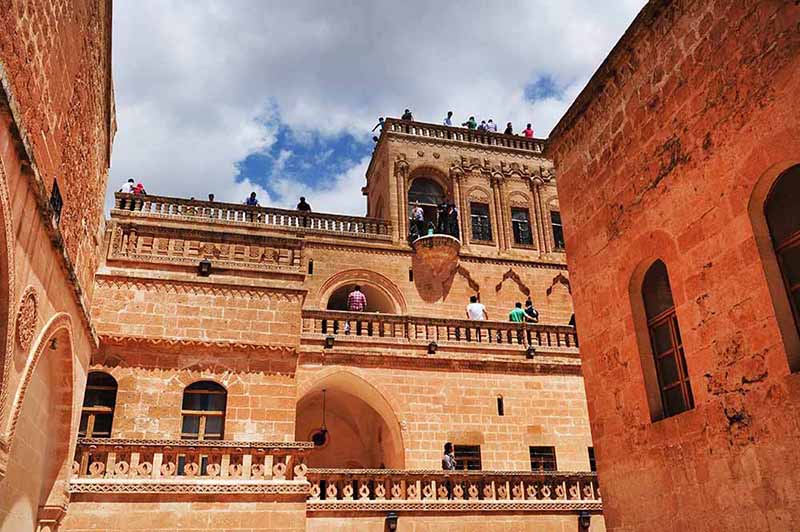
The ancient city of Midyat is located in southeast Turkey and has managed to preserve the old buildings and churches.
Afternoon: Mor Yakup Monastery (Nusaybin)
- Founded: 4th century
- Highlights: Important center of early Christian theology, including connections to Saint Jacob of Nisibis.

Dara Ruins caves houses, Mardin, Turkey.
Tips for Religious and Cultural Travelers
- Modesty matters: Dress respectfully, especially when visiting functioning religious sites.
- Ask before taking photos: Some interiors or religious ceremonies may be off-limits to photography.
- Hire a local guide: Many speak Arabic, Turkish, and Syriac, and provide deep insight into the region’s layered history.
- Visit during spring or autumn: For the most pleasant weather and vibrant cultural events.
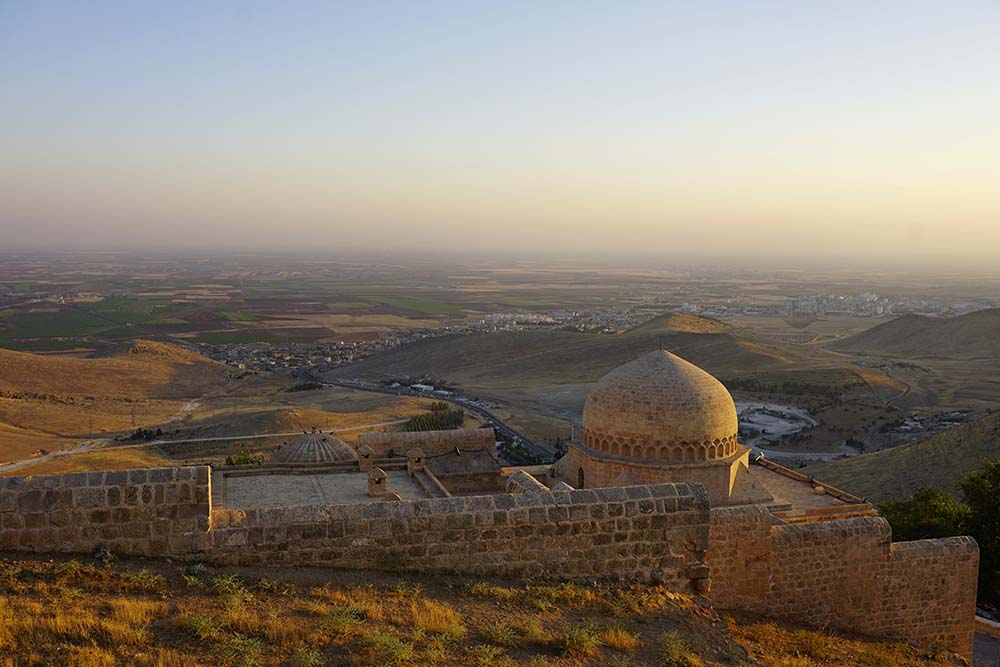
Kasimiye Madrasah, Mardin, Turkey.
Why Mardin Should Be on Every Heritage Lover’s Map
Mardin is not just a city; it’s a living museum where Assyrian, Arab, Kurdish, Armenian, and Turkish cultures intersect. With its millennia-old religious sites, unparalleled stone architecture, and warm local hospitality, a trip to Mardin -and especially to Deyrulzafaran Monastery- is both a spiritual retreat and a historical odyssey.

